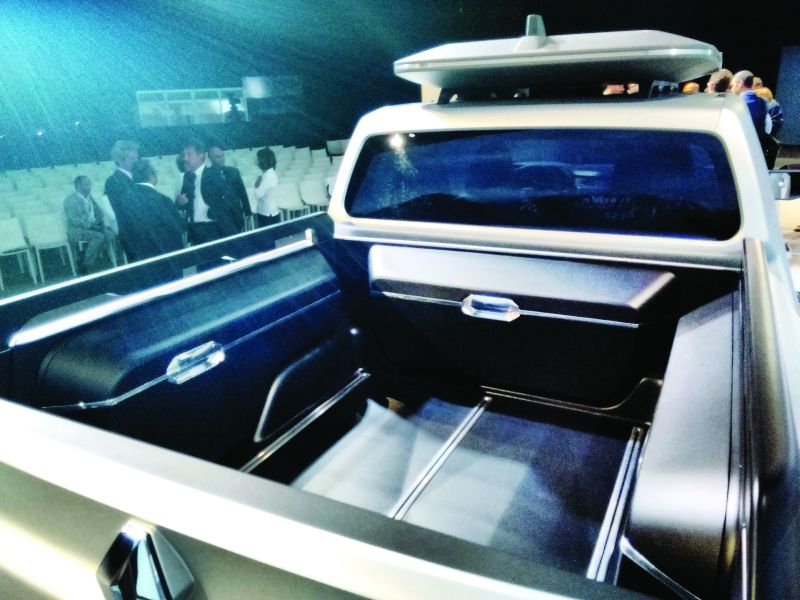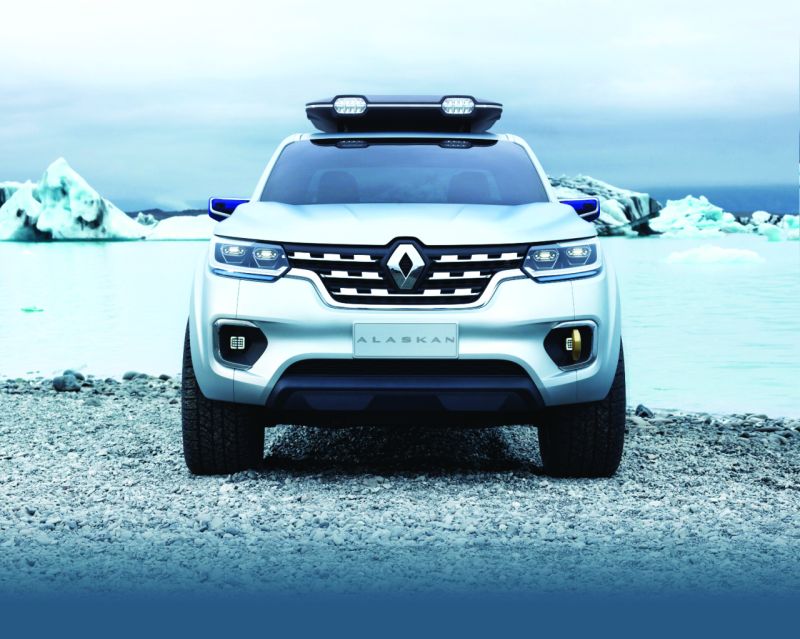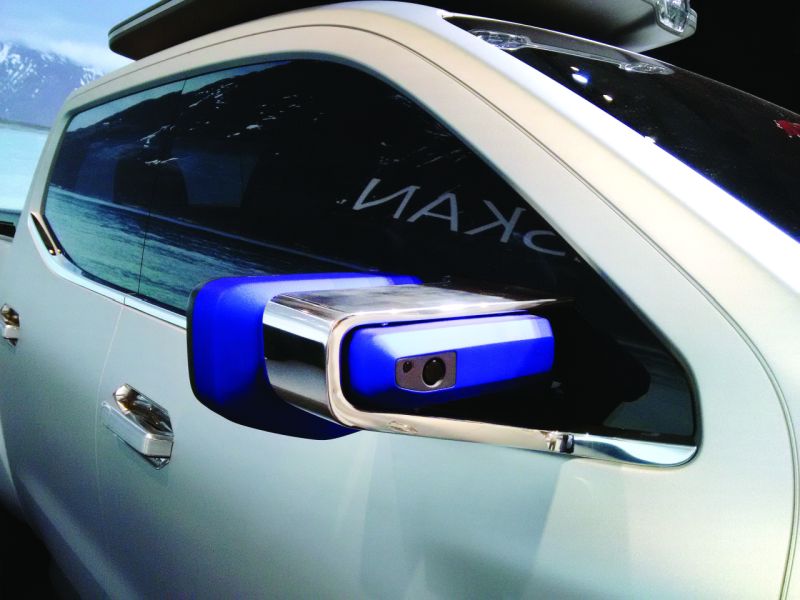The Alaskan
What draws attention foremost is the Alaskan’s imposing front grille with the big Renault logo at the centre. The grille is in line with the business looks many new Renault models are coming to have, including the KWID compact SUV. LED headlamp clusters, integrated on either side of the grille, are encased by sweeping C-shaped daytime running lights. Contributing to the muscular and what looks like a visually heavy and robust build, the Alaskan sports vast 21-inch dia wheels. Placed within their gently bulging wheel-arches, they provide some mini monster truck excitement. In a twin cab guise, the ‘show’ pick-up has intricate LED tail-lamps on either side of the load bay gate. Apart from the detailing of the wheels, the production vehicle may lose out on the door mirrors fitted with cameras and front fog-lights with integrated towing hooks.
The dci 190 written on chrome indents built into the flanks indicate a 190-PS four-cylinder version of a twin turbo diesel engine that is already being used in the Renault CV range. Equipped with a switchable 4WD, the Alaskan is a monocoque construction. Sticking to the rules of the segment, including impressive dimensions and a visual sense of power and robustness according to Laurens Van Den Acker, SVP – Corporate Design, the pick-up also carries specific Renault cues in the form of front-end design. “It is quite robust even though it is a mono body design,” said Van Den Acker. Laurens’ mention of the rules of the pick-up segment assumes importance, and at a juncture where Renault are looking at their pick-ups to provide a good deal of thrust. Renault are well aware that they have a long way to go in pick-ups. The pick-up market accounted for over five million sales in 2014. It is the expanding pick-up market, which has been the primary contributor to the growth of global LCV market. It is made up of three categories: a 1/2-tonne pick-up, one-tonne pick-up and a full-size pick-up. The ½-tonne pick-ups command three per cent market share, the one-tonne pick-ups command 17 per cent market share, and the full-size pick-ups command 18 per cent market share. In the US and Canada, the full-size pick-ups command 90 per cent of the market.

Show Car to a Production Model
Not expected to lose much of the mini monster truck drama by the time it begins production, the Alaskan is also expected to spring more variants. So it will not just be a twin cab pick-up even though that is what makes it fashionable. Depending on the market needs, the Alaskan will mould itself. Reflecting on Renault’s LCV business strategy, which also includes associating with Daimler, GM Europe, Renault Truck and FIAT, the Alaskan makes a style statement and points to an interesting lifestyle statement. In India, however, it is the Duster Oroch that is expected to arrive before the Alaskan does. For an LCV market that is highly segmented and micro truck intensive, a pick-up like Alaskan may take time coming.






















Leave a Reply